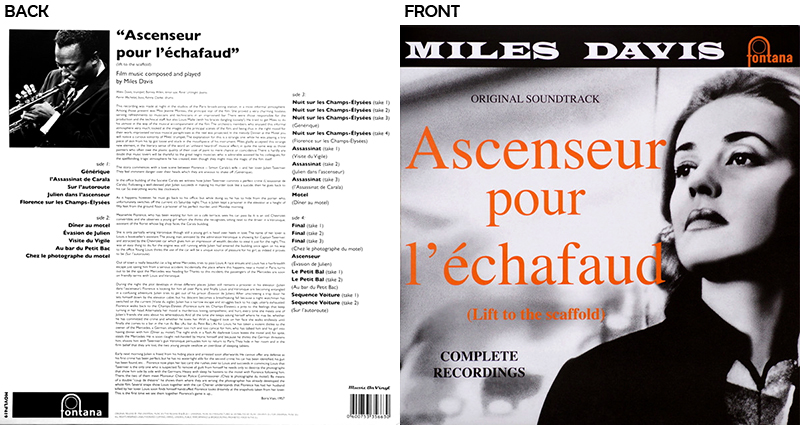| Back to Genre | The Story Of |
 |
|
 |
Rating: Excellent |
In the winter of 1957, Miles Davis walked not only the streets of Paris, but also an inner landscape simmering with change. Behind him lay the storms of bebop and the stillness of his Birth of the Cool–time, but something new opened up for him—an unexpected film job from French director Louis Malle. Malle wasn't looking for a conventional soundtrack for his feature film. Ascenseur pour l'Échafaud, but music that breathed, improvised, lived. Davis, who had spent his entire career balancing at the intersection of disciplines, agreed—and took on the challenge with nothing but a few thematic clues and the image itself as the score.
What he created that night in the Paris studio is more than film music. It's a suite of impressionistic moods, entirely improvised, with the film projection as his guide and intuition as his compass. No polished melodies or bombastic motifs here, but echoes of deserted streets, cigarette smoke in hotel lounges, and a lone trumpet cast like a shadow against the screen. Davis's playing is whispering, fragile—like the soft thumping of a conscience against the walls of a hotel room. The rhythms are slow and floating, carried by René Urtreger on piano, Barney Wilen on sax, Pierre Michelot on double bass, and Kenny Clarke on drums. French jazz cats who found their place under the tutelage of a master who knew only one direction: forward.
The music on this album eschews any traditional jazz form. No themes with predictable solos, no standard AABA structures—this is free expression, but without the cerebral coolness of later free jazz. Here, freedom is warm-blooded, melancholic. Every note is a question without an answer, a suggestion rather than a statement. Davis's trumpet is not a narrator, but a witness—of what, we don't know exactly, but we sense it's important. This record is the silence between words, translated into sound.
When the album was released in 1958, Europe was undergoing a cultural shift. Postwar youth sought new forms of expression, and jazz became the sounding board for existentialists, bohemians, and cinephiles. In the United States, jazz was formalizing into hard bop and cool jazz, but here in France, it was still allowed to be untamed. Davis's music fit seamlessly into that moment: modern and mysterious, rooted in the blues yet reaching for something more universal—something that spoke to the night, to doubt, to the urge for meaning.
The recording took place on December 4 and 5, 1957, at Le Poste Parisien, a radio studio in the French capital. Louis Malle projected the film onto a screen, and Davis moved along it like a shadow player, his trumpet responding to images like a second skin. The atmosphere in the studio must have been almost sacramental—the musicians played in silence, almost whispering, as if they weren't recording but incanting something. No retakes, no edits. Get it right once, and then capture it forever.
On vinyl sounds Ascenseur pour l'Échafaud Like a dim light in a silent room. The pressing of this original Fontana release bears the marks of its time: a warm, grainy midrange, a breathing space between the instruments, and a touch of hiss that feels more like patina than noise. The dynamics are organic; you hear the trumpet approaching and then dissipating into the silence. The mastering is unfussy—this isn't a production that imposes itself, but one that slowly blossoms if you trust your ears to it. The cover artwork, featuring Jeanne Moreau's face photographed in black and white, is as evocative as the music itself: elegant, timeless, and with something elusive in the gaze.
Anyone who puts on this album isn't just listening to a jazz record; they're entering a world. A world where rain taps on sidewalks, where stairwells whisper, and where time seems to stand still. It's a work that doesn't scream for attention, but gently lures you into its depths. A sonic novella, written in notes, silences, and half-spoken sentences. Ascenseur pour l'Échafaud is no longer a soundtrack of a film, but of a mood, a night, a memory you didn't know you had.
An album like a deserted Parisian street at three in the morning—chill, but full of promise for those who dare to wander.
= Full Album Play List =
= Track List =